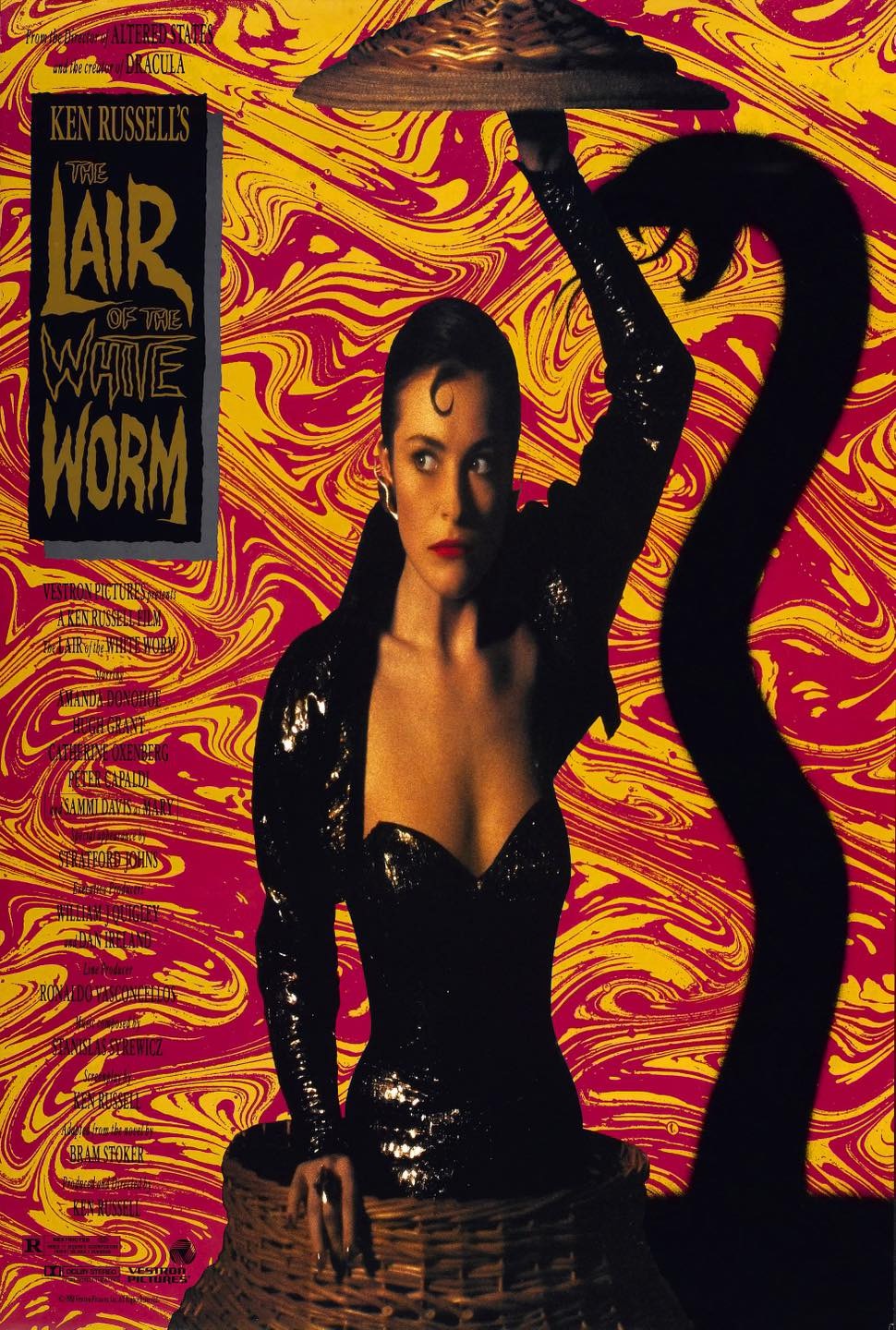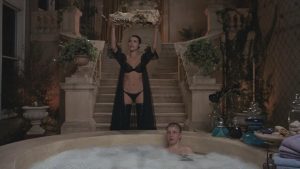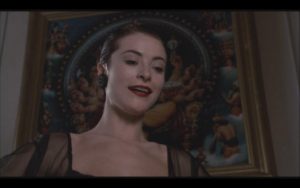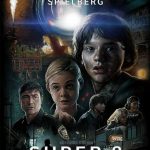The Lair of the White Worm (1988)

The Lair of the White Worm, directed by Ken Russell and released in 1988, is a British horror-comedy that blends folklore, camp, and surrealism in a highly stylized way. Loosely based on Bram Stoker’s novel of the same name, the film embraces Russell’s signature eccentricity, delivering a bizarre narrative filled with dark humor, eroticism, and religious symbolism. It stars Amanda Donohoe, Hugh Grant, and Catherine Oxenberg, whose performances add layers of wit and charm to this strange and engaging horror.
Suggested videos for you:
Plot Summary
The story is set in the English countryside, where archaeology student Angus Flint (Peter Capaldi) uncovers a mysterious skull at a bed-and-breakfast run by sisters Mary (Sammi Davis) and Eve Trent (Catherine Oxenberg). Angus suspects the skull might be connected to an ancient legend about the D’Ampton Worm, a mythical serpent said to have terrorized the area centuries ago.
Meanwhile, Lady Sylvia Marsh (Amanda Donohoe), a seductive and mysterious local aristocrat, takes a keen interest in the discovery. It becomes clear that Sylvia is not what she appears to be—she’s a priestess of the White Worm cult, devoted to an ancient serpent god known as Dionin. As Sylvia attempts to reawaken the White Worm through a series of strange rituals, Angus, along with Mary, Eve, and local nobleman Lord James D’Ampton (Hugh Grant), finds himself drawn into a struggle against her dark powers.
Themes and Tone
The Lair of the White Worm explores themes of ancient pagan rituals, religious dichotomy, and the clash between modernity and folklore. Lady Sylvia’s character embodies the seductive danger of pagan mysticism, contrasting with the Christian imagery and values represented by other characters. The film uses religious symbols in subversive ways, often blurring the lines between good and evil as it plays with ideas of temptation, sacrifice, and rebirth.
Tonally, the film oscillates between horror and comedy, with moments of genuine creepiness juxtaposed against overtly campy, absurd scenes. This mix of horror and dark humor is unmistakably Ken Russell’s style; he indulges in over-the-top visuals and tongue-in-cheek dialogue, making it clear that the film doesn’t take itself too seriously. Instead, The Lair of the White Worm revels in its own absurdity, transforming what could have been a standard horror narrative into a surreal, Gothic experience.
Characters and Performances
Amanda Donohoe’s portrayal of Lady Sylvia Marsh is the highlight of the film. She brings a deliciously wicked charm to the character, straddling the line between seductive villainess and camp icon. Donohoe’s performance is flamboyant and unapologetic, full of innuendo and theatrics that make her scenes both funny and unsettling. She captures the essence of Russell’s vision for the film, delivering one of horror cinema’s most memorable villainous performances.
Hugh Grant, in one of his earlier roles, plays Lord James D’Ampton with a blend of British aristocratic charm and humor, adding a grounded yet witty presence. Peter Capaldi’s Angus is a curious and likeable protagonist, whose scholarly dedication drives him into Sylvia’s web of supernatural danger. Together, the cast strikes a balance between horror and humor, playing into the campiness of the film while still grounding its more intense moments.
Visuals and Symbolism
Russell’s visual style is bold and theatrical, using striking imagery that includes hallucinations, psychedelic dream sequences, and religious iconography. The film’s most surreal moments are depicted through vivid, almost kaleidoscopic scenes filled with eroticism, pagan rituals, and Christian symbolism. One of the most memorable sequences features visions of crucified nuns, Roman soldiers, and sacrificial rites, symbolizing the clash of faiths and the primal fears embedded within these mythologies.
The set design and costuming also add to the film’s eccentric aesthetic. Lady Sylvia’s home is filled with bizarre decor that reflects her ancient, serpentine identity, while her frequent transformations—from aristocratic temptress to fanged, reptilian predator—add a monstrous elegance to her character. The snake motif is present throughout the film, creating an atmosphere that is at once sensual and ominous.
The special effects, though occasionally low-budget, capture the campy tone and make the horror elements more palatable. This is especially true of the worm itself, which is portrayed through practical effects that emphasize its monstrous, grotesque nature without relying on realism. Russell’s emphasis on atmosphere and symbolism makes up for any technical limitations, creating an immersive and distinctive visual experience.
Reception and Criticism
The Lair of the White Worm has always been divisive, largely due to its campy tone and unconventional style. Critics were split at the time of its release; some saw it as an inspired work of absurdist horror, while others found it to be too strange and unfocused. Over the years, however, it has gained a cult following, particularly among fans of British horror and surrealist cinema. Its unique blend of Gothic horror, eroticism, and dark humor has cemented its place as a memorable, if polarizing, film in the horror genre.
Some of the criticism stems from the film’s pacing and seemingly chaotic narrative structure. Russell indulges in tangents that emphasize style over plot coherence, which can make the storyline difficult to follow. However, for those who embrace its eccentricity, this chaotic approach enhances the surreal experience, adding to the dreamlike quality of the film.
Legacy and Impact
Despite its mixed reception, The Lair of the White Worm endures as a cult classic, revered for its daring visuals, unique take on horror, and Donohoe’s captivating performance. It has inspired discussions about the intersection of folklore and horror, as well as the use of camp in horror cinema. For many viewers, the film’s bold embrace of weirdness and its unapologetic attitude have turned it into a piece of beloved horror cinema that stands out from more conventional films of its time.
The film’s legacy also lies in its place within Ken Russell’s body of work. Known for his controversial, boundary-pushing style, Russell brings a distinct vision to The Lair of the White Worm, making it a film that’s not easily forgotten. His ability to blend horror, humor, and surrealism has left a lasting impression, and the movie is often cited as an example of how horror can push creative boundaries.
Conclusion
The Lair of the White Worm is an eccentric and visually striking piece of horror cinema that captures Ken Russell’s flair for the surreal and absurd. While its story of ancient serpent gods and seductive villains might not appeal to everyone, it offers a unique experience for fans of horror who appreciate a blend of folklore, camp, and subversive symbolism. The film’s mixture of horror and dark humor, along with Amanda Donohoe’s unforgettable performance, creates a distinct atmosphere that lingers long after the credits roll. Though unconventional, The Lair of the White Worm has earned its place as a cult classic, embracing its bizarre, unapologetic nature with style and wit.











